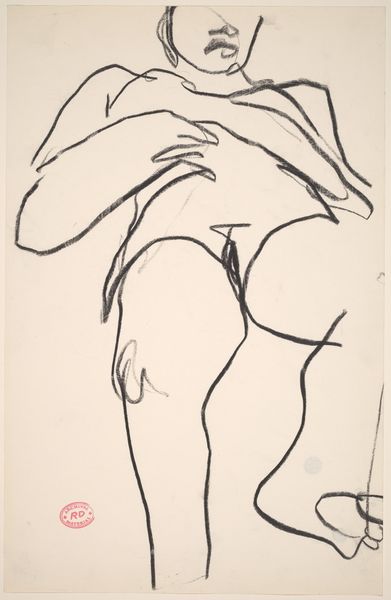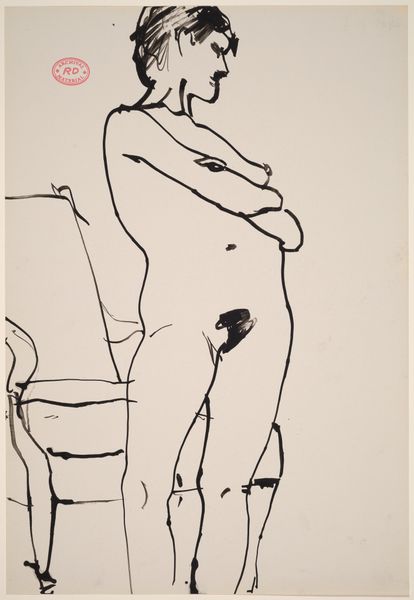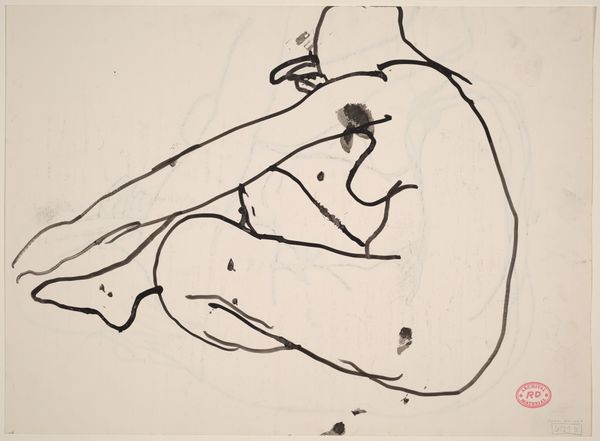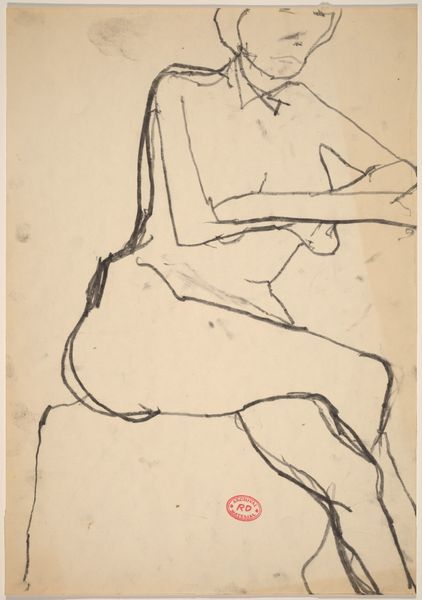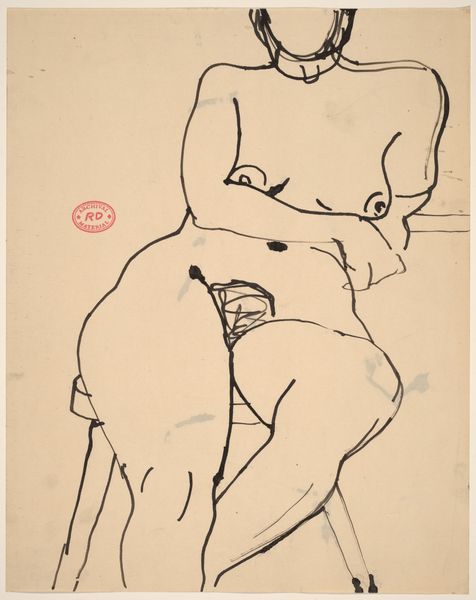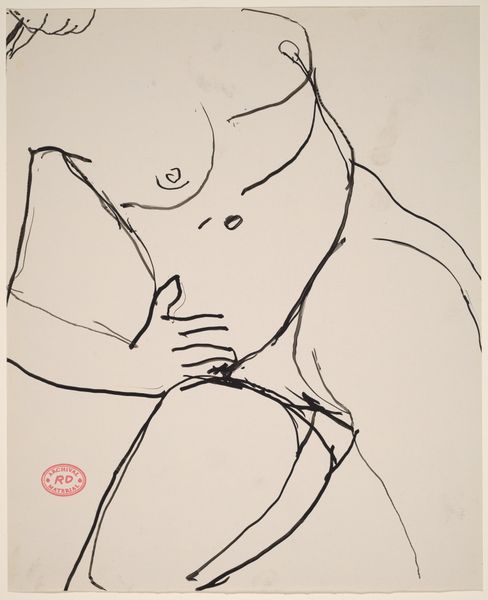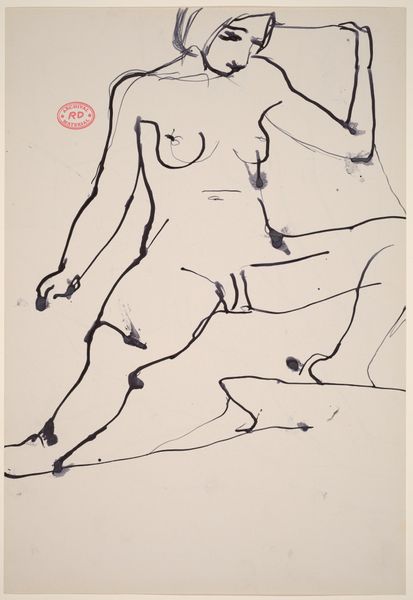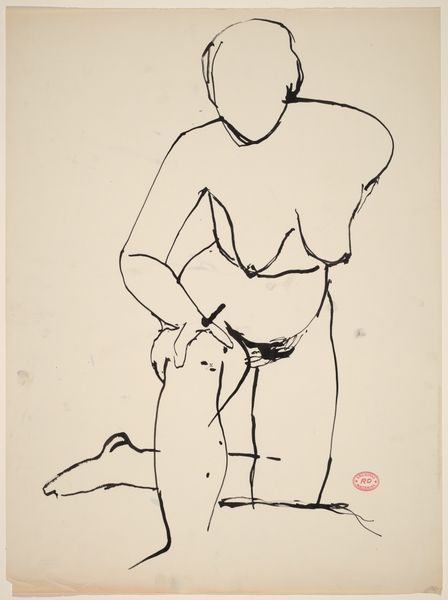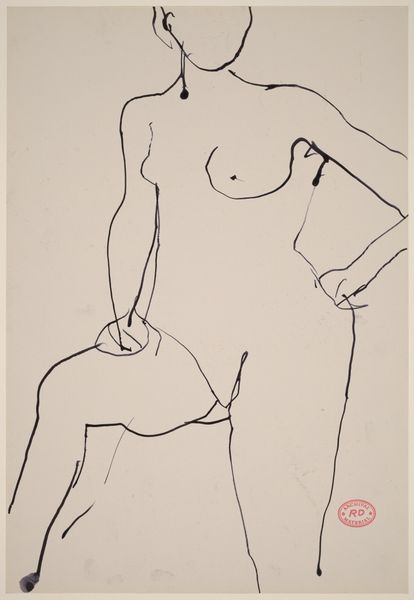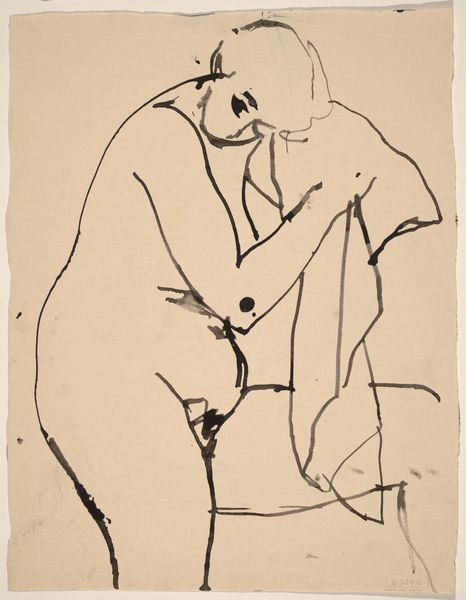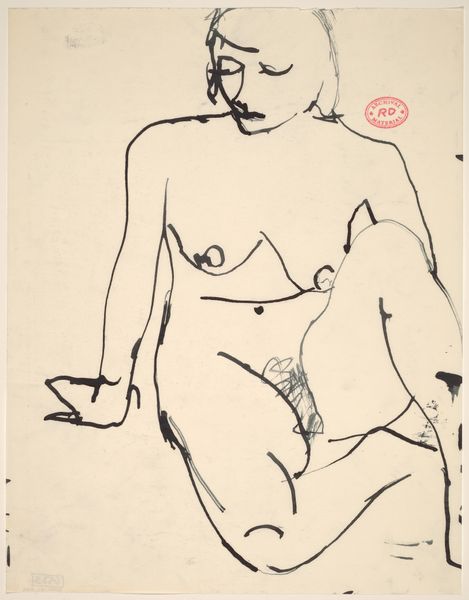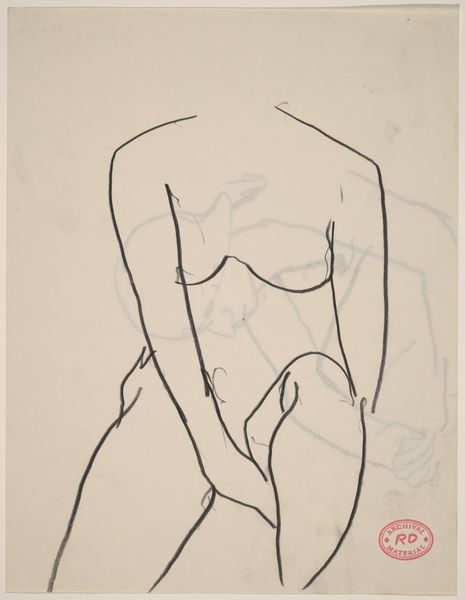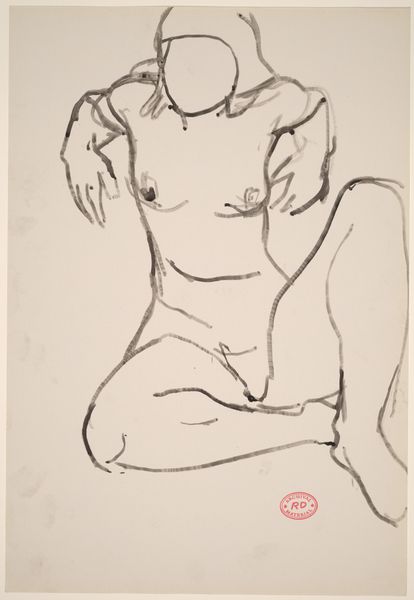![Untitled [female nude] [recto] by Richard Diebenkorn](/_next/image?url=https%3A%2F%2Fd2w8kbdekdi1gv.cloudfront.net%2FeyJidWNrZXQiOiAiYXJ0ZXJhLWltYWdlcy1idWNrZXQiLCAia2V5IjogImFydHdvcmtzLzY4ZjExODYzLWEwNGItNDE3OS1iMWM0LTg3MDU0NzJkMjVjZS82OGYxMTg2My1hMDRiLTQxNzktYjFjNC04NzA1NDcyZDI1Y2VfZnVsbC5qcGciLCAiZWRpdHMiOiB7InJlc2l6ZSI6IHsid2lkdGgiOiAxOTIwLCAiaGVpZ2h0IjogMTkyMCwgImZpdCI6ICJpbnNpZGUifX19&w=3840&q=75)
drawing, ink
#
abstract-expressionism
#
drawing
#
ink drawing
#
figuration
#
bay-area-figurative-movement
#
ink
#
nude
Dimensions: overall: 43.2 x 31.8 cm (17 x 12 1/2 in.)
Copyright: National Gallery of Art: CC0 1.0
Curator: Up next we have a look at a striking ink drawing by Richard Diebenkorn titled, simply, "Untitled [female nude] [recto]", which he worked on sometime between 1955 and 1967. Editor: Immediately I'm struck by the fluidity and fragility of the line. It feels both unfinished and incredibly raw. The figure seems almost to be emerging from the page itself. Curator: It’s a compelling example of abstract expressionism meeting figuration, where the female form is suggested rather than explicitly rendered. Think about the era, post-war America grappling with identity. What do you make of that? Editor: The stark black ink against the white ground certainly amplifies that sense of emergence, or perhaps even struggle. The bold strokes might be interpreted as defiance against traditional representations, but that very bold symbolism gives the picture power. Curator: There is certainly a tension, an attempt to reconcile abstract forms with the recognizable human figure, reflecting Diebenkorn's engagement with shifting cultural attitudes towards the body and representation itself. You know he served as a Marine in World War II, seeing firsthand the devastation. Editor: And that kind of experience marks you; it resonates through everything you do, consciously or unconsciously. The incomplete nature feels poignant, speaking perhaps to the fragmented nature of the self and the human form. I think of similar poses across art history, a constant exploration and re-interpretation. Curator: Exactly, think about the male gaze that traditionally defined these works, which this piece seems to subvert or at least question. The cultural context of Cold War America plays in too, reflecting anxieties around societal structures and individual identity, so you have this constant negotiation going on through symbolism in art. Editor: It's true. I feel a deeper emotional resonance when I recognize the art object functioning as a locus point in broader culture. Curator: So, although seemingly simple at first glance, Diebenkorn's drawing holds complex layers of meaning rooted in history and his context. Editor: And through that history, revealing universal themes of vulnerability and re-emergence, so it is the individual expression, rooted in symbols.
Comments
No comments
Be the first to comment and join the conversation on the ultimate creative platform.
